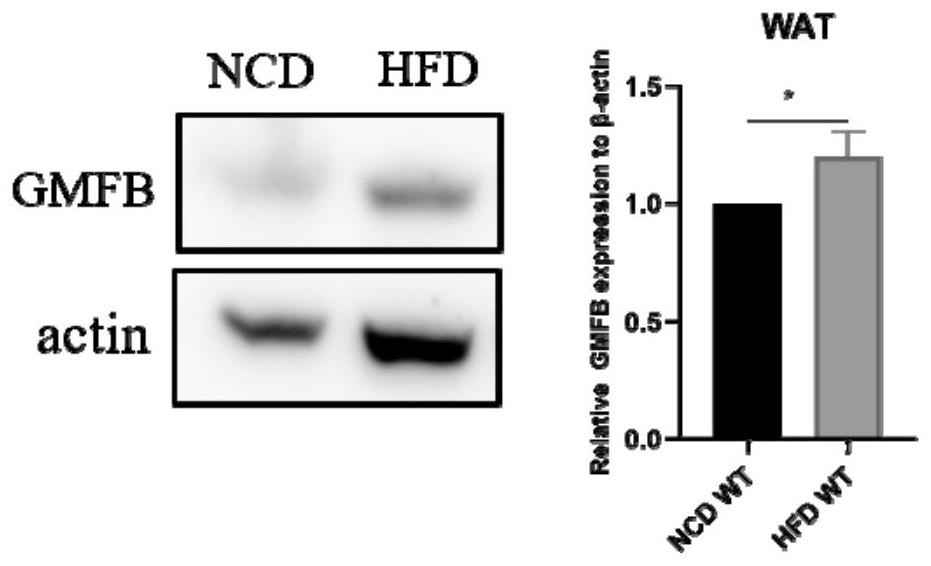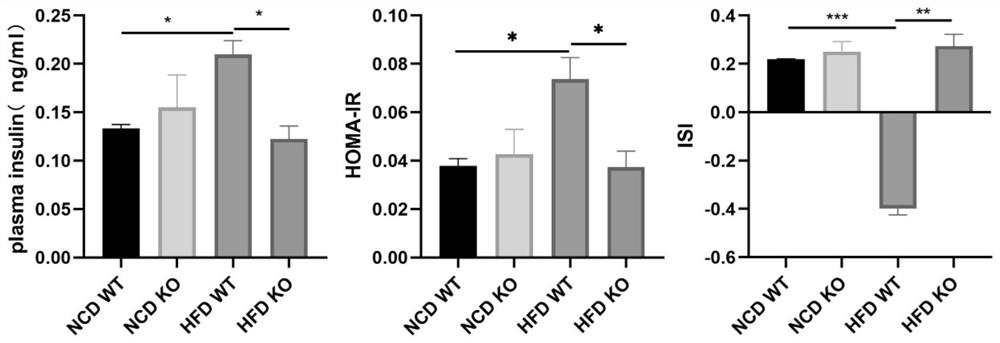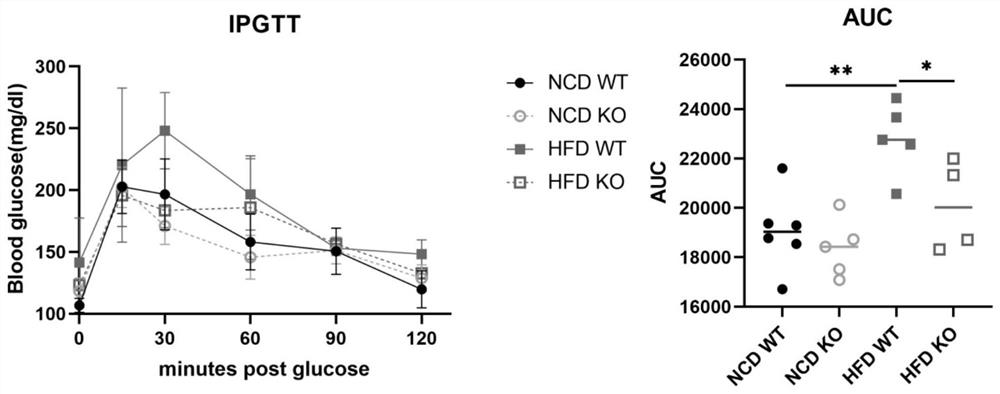Application of GMFB as insulin resistance biomarker
A technology for insulin resistance and biomarkers, which can be used in biological testing, biological material analysis, medical preparations containing active ingredients, etc., and can solve problems such as no GMFB yet.
- Summary
- Abstract
- Description
- Claims
- Application Information
AI Technical Summary
Problems solved by technology
Method used
Image
Examples
Embodiment 1
[0056] GMFB expression detection.
[0057] After the SD rats were killed by neck dislocation, a T-shaped incision was made on the chest and abdomen, and the white adipose tissue in the groin was taken by hand, and then the tissue protein was extracted. The expression level of GMFB was detected.
[0058] figure 1 It shows that GMFB expression in adipose tissue increases after high-fat diet.
Embodiment 2
[0060] Insulin concentration detection.
[0061] The plasma of SD rats in each group was collected and tested by ELISA:
[0062] After the SD rat was anesthetized, it was killed by dislocation of the neck, the chest cavity was opened, and blood was taken from the heart, which was taken into an EP tube containing EDTA-anticoagulant, then centrifuged at 2000-3000rpm for 15-20 minutes, and the supernatant was drawn to obtain a light yellow color plasma;
[0063] The obtained plasma was subjected to an ELISA experiment to detect the plasma insulin concentration, and the changes of the plasma insulin concentration were compared. The operation is as follows: take out the required enzyme label strip, add 100ul of sample, and set up zero hole (sample dilution), standard hole, and sample hole to be tested respectively. Cover the ELISA plate, place in a wet box, incubate at 37°C for 120 minutes; discard the liquid, wash 4 times; add 100ul of 1×HRP-labeled detection antibody to each we...
Embodiment 3
[0066] Glucose tolerance test.
[0067] Glucose tolerance test was carried out after 12 weeks of high-fat diet and normal diet in SD rats. The specific operation is as follows: SD rats are intraperitoneally injected with 20% glucose (1 g / kg), and then the blood glucose concentration is measured with a Yuyue blood glucose meter at 0, 15, 30, 60, 90, and 120 min. The result is as image 3 as shown, image 3 It is a schematic diagram of glucose tolerance detection in wild-type SD rats and GMFB gene-knockout SD rats under the condition of normal diet and high-fat diet for 12 weeks.
[0068] image 3 The results showed that GMFB gene knockout improved the blood sugar rise caused by insulin resistance in rats fed a high-fat diet, and the area under the curve of the glucose tolerance test was significantly reduced, which improved glucose tolerance.
PUM
 Login to View More
Login to View More Abstract
Description
Claims
Application Information
 Login to View More
Login to View More - R&D Engineer
- R&D Manager
- IP Professional
- Industry Leading Data Capabilities
- Powerful AI technology
- Patent DNA Extraction
Browse by: Latest US Patents, China's latest patents, Technical Efficacy Thesaurus, Application Domain, Technology Topic, Popular Technical Reports.
© 2024 PatSnap. All rights reserved.Legal|Privacy policy|Modern Slavery Act Transparency Statement|Sitemap|About US| Contact US: help@patsnap.com










